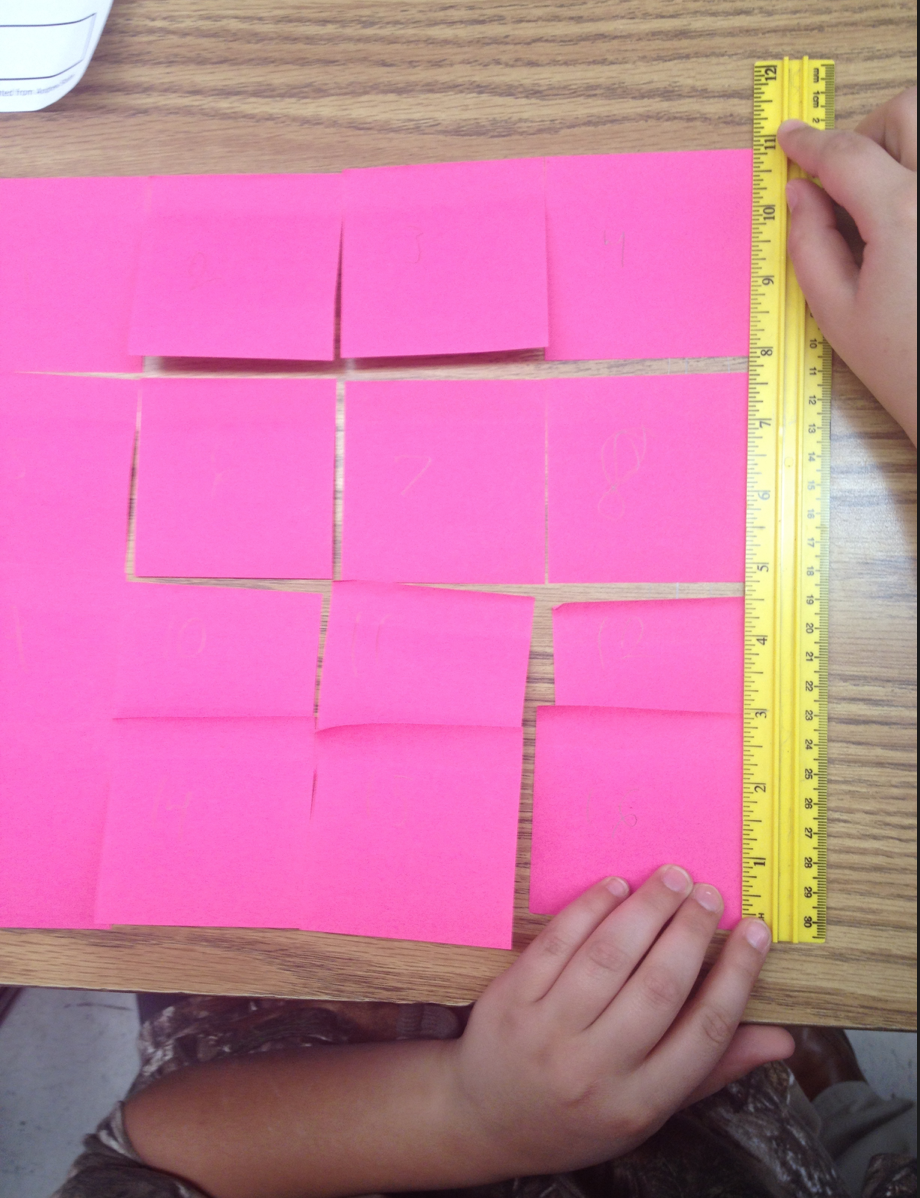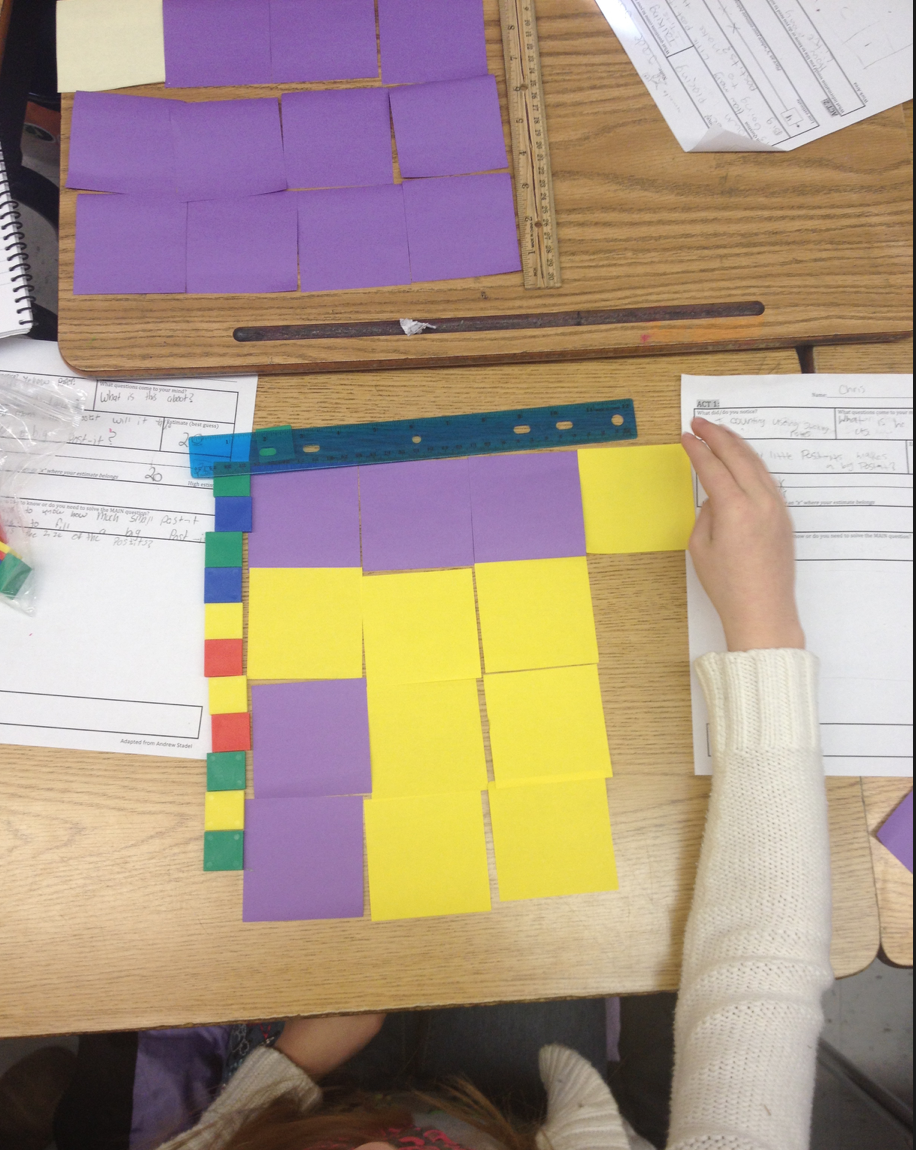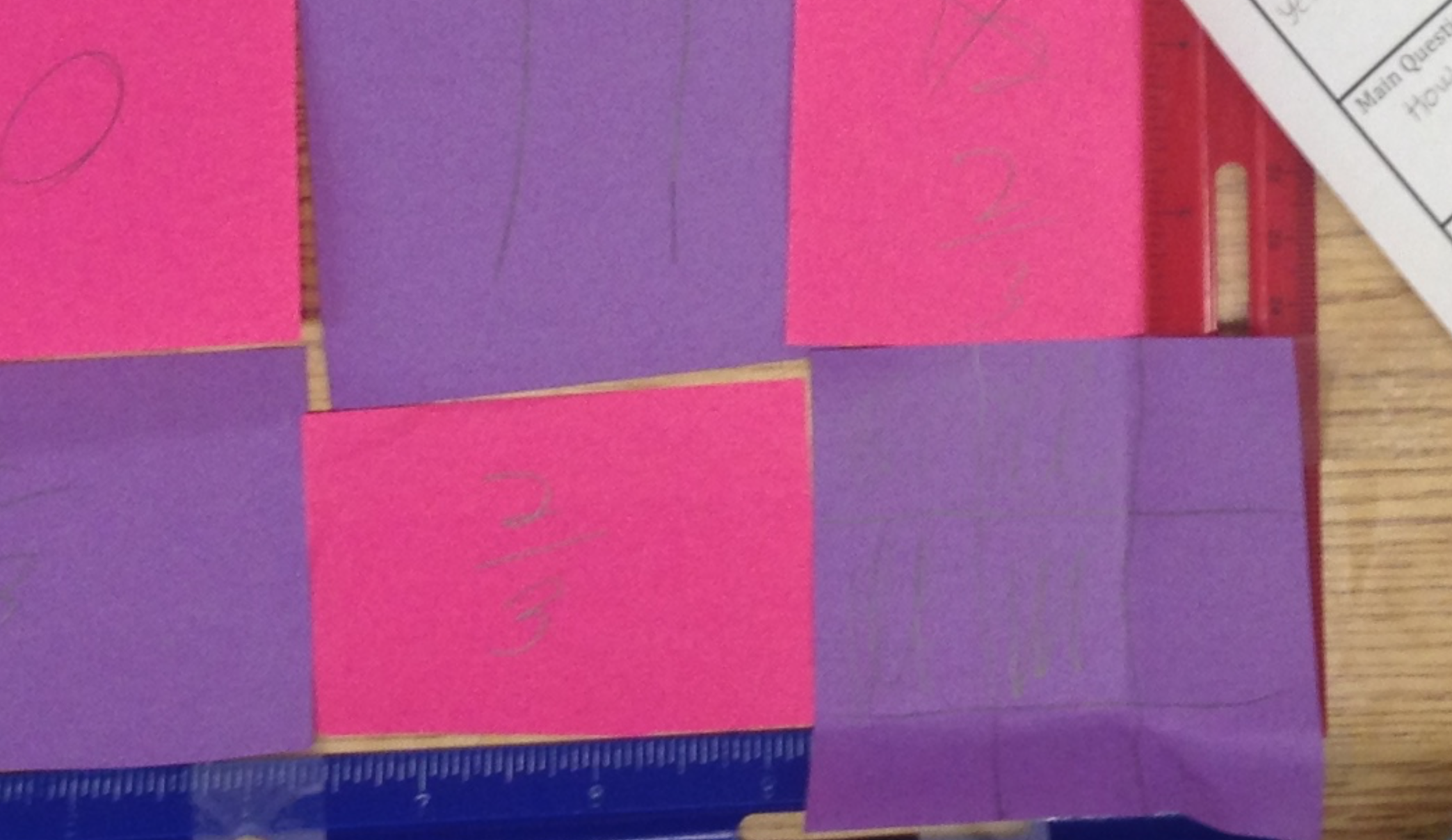I tried “the Big Pad” with a 4th grade class and my anticipation of possible solutions was way off!!! I mean, c’mon Graham, think outside the box.
Our students attacked this problem in more ways than a charter bus filled with senior citizens attacks an All-U-Can-Eat Buffet. Needless to say I was impressed! Chris Hunter provides a great example of how we can plan and anticipate for student solutions.
The only thing I gave students in Act 2 was the dimensions of the big pad (11 x 11). The rest of the tools were selected by students.
At first, this student only used Post-Its which proved problematic because he could never nail down the precise measurements. Eventually he went to a ruler but it took some time to get there.
Students were able to quickly recognize that they needed at least nine Post-its and that’s when the fun began. The best conversations occurred as students grappled with “a part” of the 4th Post-it.
La question du jour: How much of the 4th Post-it are you using? Prove it.
Me: How much of the 4th Post-it are you going to use?
Student: We are going to use 2 of the 3 inches so each inch of the Post-it is a third (1/3).
It sounded like they were on the right track so I left. I returned a couple of minutes later and couldn’t help but notice their model.
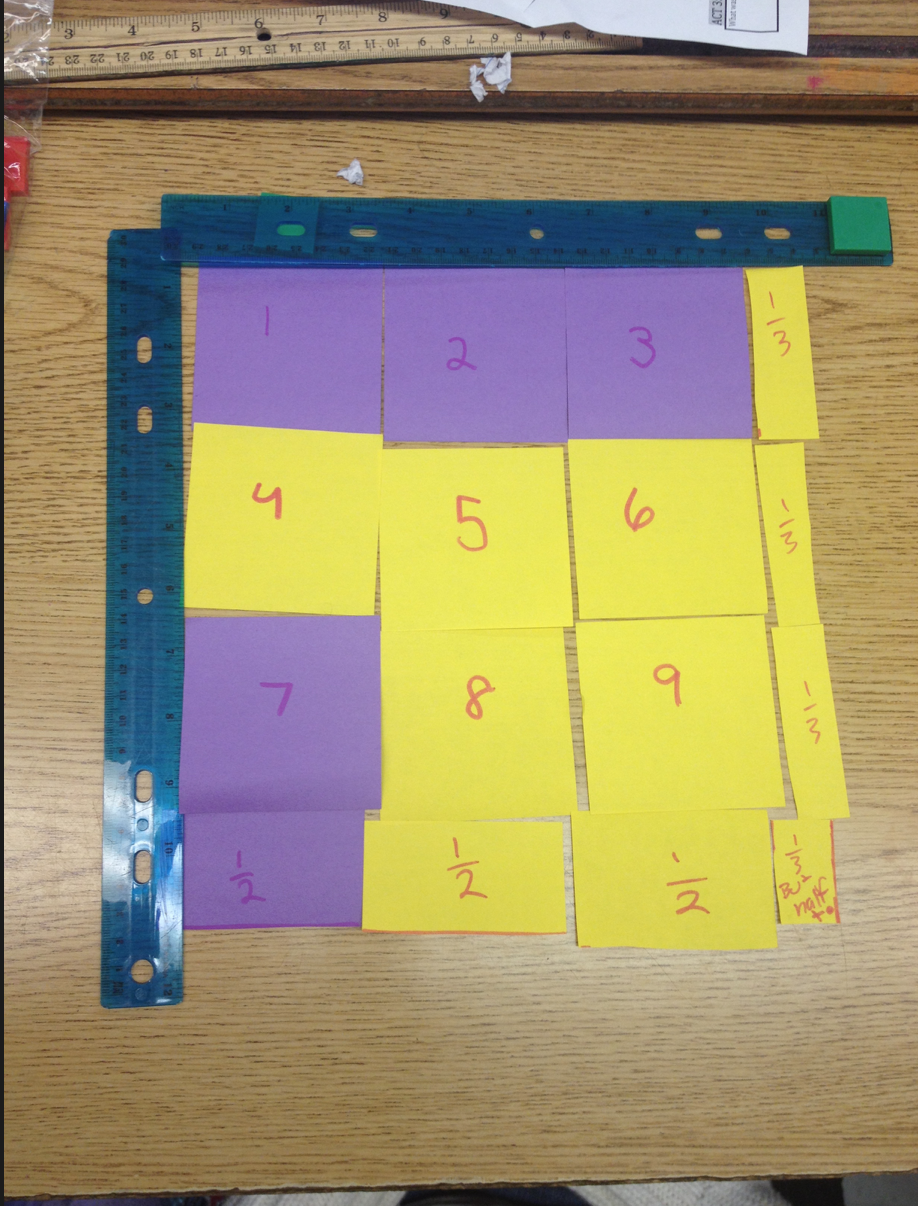
I captured the picture above because I felt it was a great talking piece to discuss with the class during the wrap up. I’m totally stealing a play from Peg Smith and a technique Kristin over at MathMinds owns.
 I wanted the girls to explain their reasoning as to how they labeled each piece. This is usually my favorite part of modeling math because I get to engage with students as they begin to validate they understanding thus far…and today didn’t disappoint.
I wanted the girls to explain their reasoning as to how they labeled each piece. This is usually my favorite part of modeling math because I get to engage with students as they begin to validate they understanding thus far…and today didn’t disappoint.
Me: So I notice you have 1/2 on the bottom and 1/3 on the side. Explain what they mean.
Student: Well we knew that the side and bottom would not need a full Post-it so we had to cut it. The side needed a third and the bottom needs a half Post-it.
Me: Tell me what you know about the side and the bottom.
Student: Well they actually need the same because the sides should have two 1/3 pieces and….oh we don’t! Sorry. (fixes it by adding another 1/3 and continues) So I should have 2/3 on the side and 1/2 on the bottom?!?! No wait they’re not even. The bottom and the side should each have 2/3 three times as well.
And then there was the bottom right corner which we are still working on…
For the most part, students were able to identify each piece but NOT as a fraction, just the size. The students that were most accurate created the Big Pad by drawing it….
…others combined two sheets of paper to make an 11 x 11…
 …and one group taped the rulers down to the table. In fact, they were the only group that was able to identify the area of the bottom right hand corner as a fraction.
…and one group taped the rulers down to the table. In fact, they were the only group that was able to identify the area of the bottom right hand corner as a fraction.  Here’s the up close of the bottom right corner which proved extremely problematic for students in each group.
Here’s the up close of the bottom right corner which proved extremely problematic for students in each group.
We’re still not sure how to add everything up (wholes, thirds and ninths). Adding unlike denominators isn’t until 5th grade but I think this context provides a beautiful opportunity to explore the use of equivalent fractions for the purpose of addition. Hmmm?
We didn’t get to finish so I shared this recording sheet for the students to continue working on the next day. My take-aways:
- Students struggled identifying different size parts of a whole as unit fractions. Tangrams are a perfect resources to help us out.
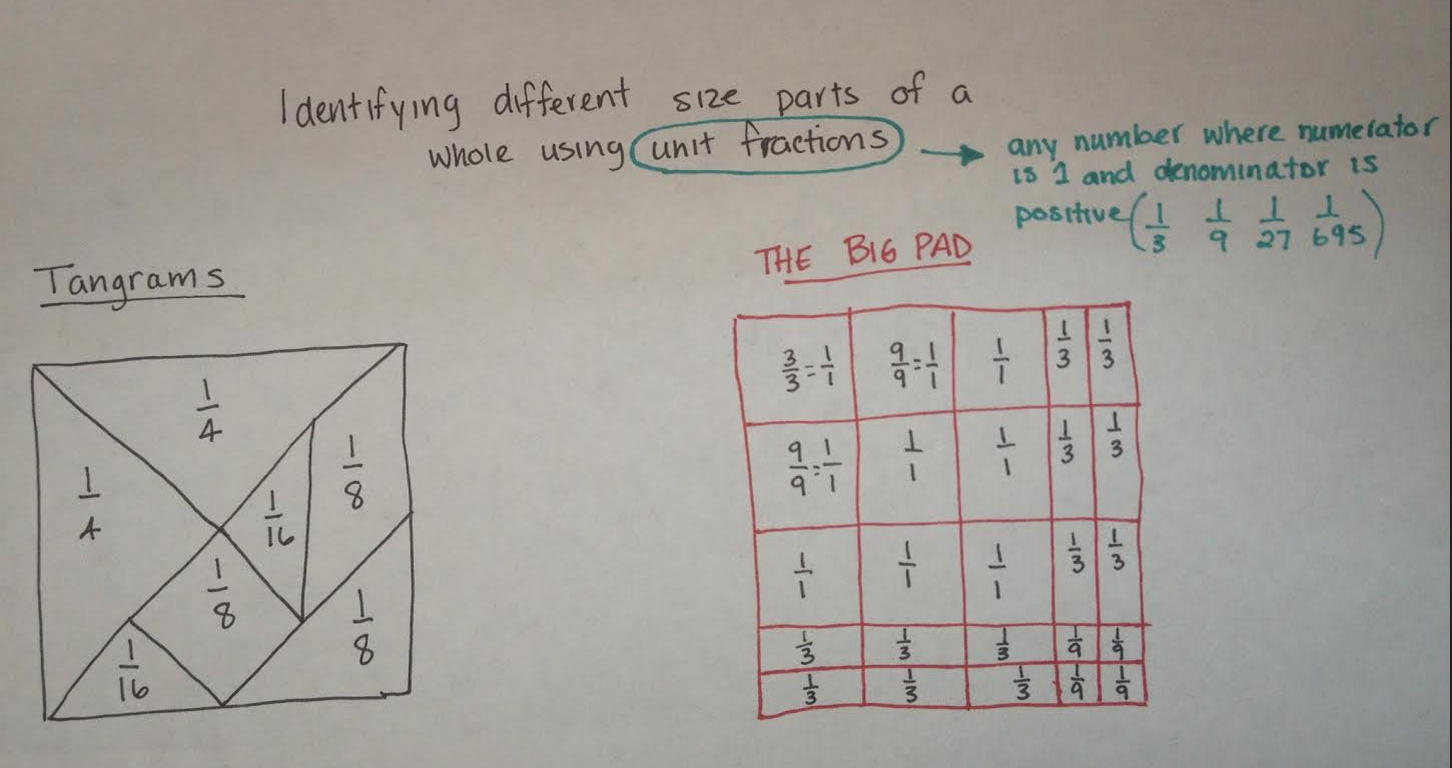
- I can never be ready for every student’s solution but I can try. Thinking about student solutions before the task continues to improve my questioning (self-evaluated of course).
- Students need a greater amount of opportunities to preserver with tools. After 10 minutes, almost every group had stopped using their ruler in a task where precision was required. I’m trying to think of a context from when precision doesn’t matter.
- Many times, students are able to verbally explain the mathematics but the model does not match their explanation. I need to ensure the model and explanation match, but unfortunately I know this is not always the case.

